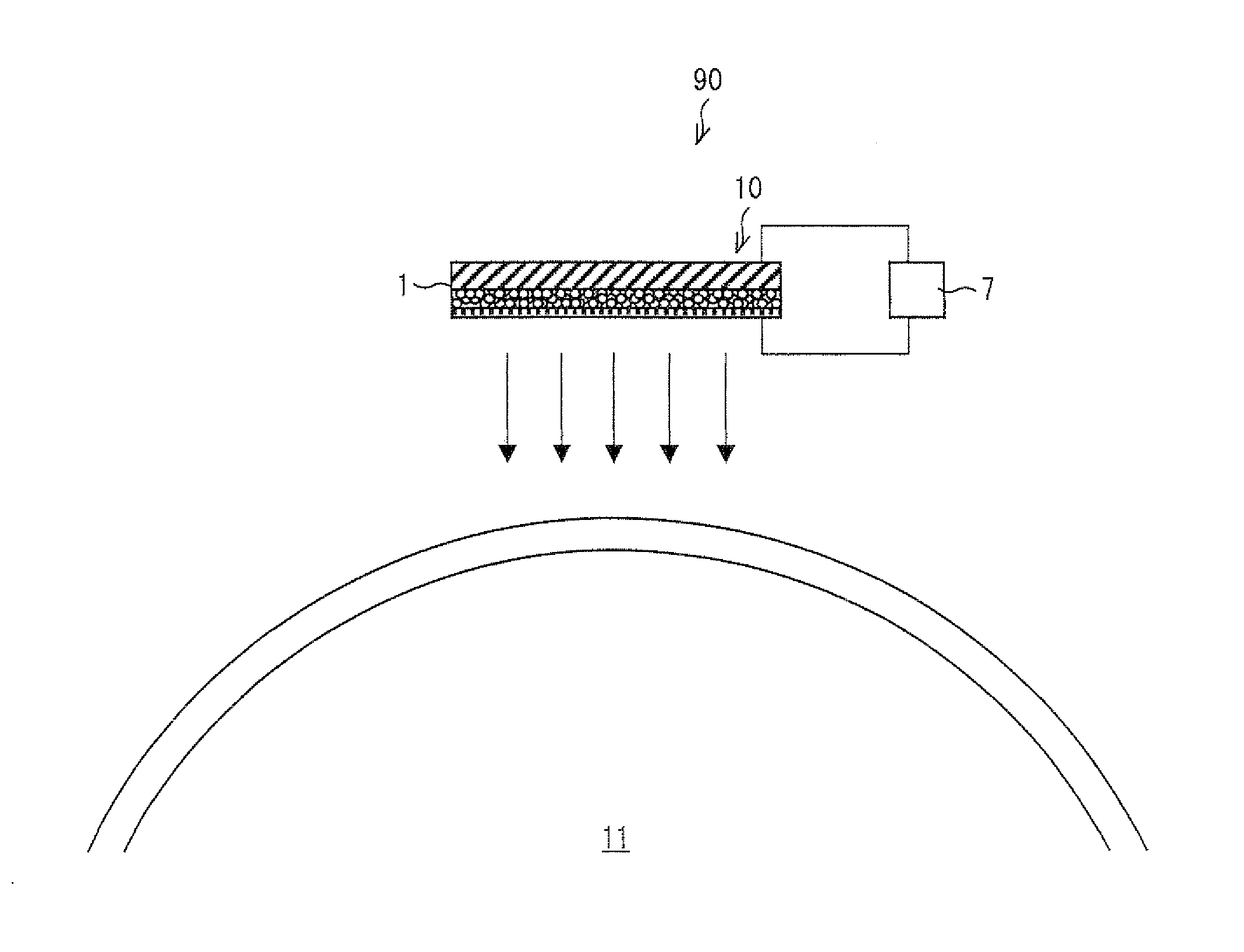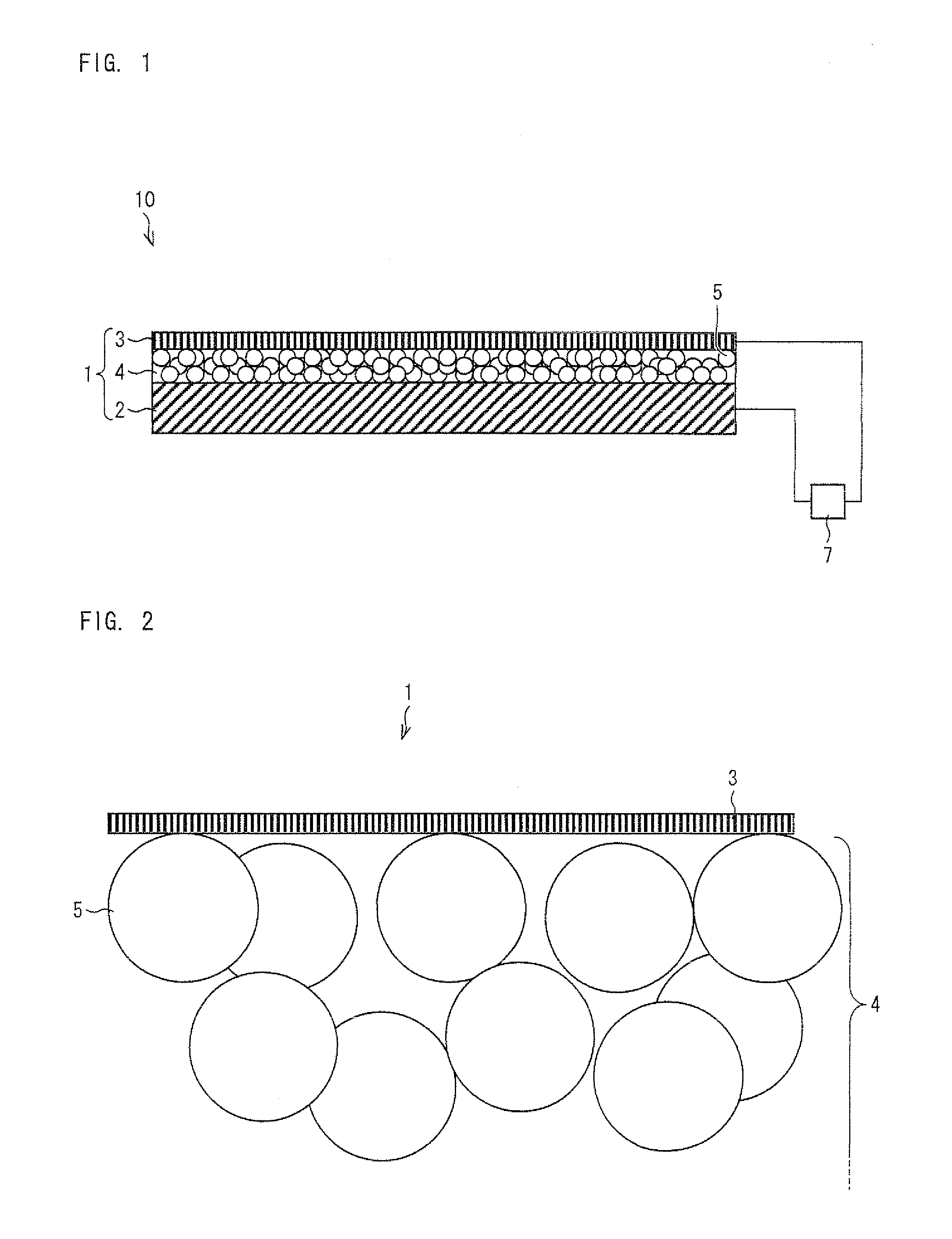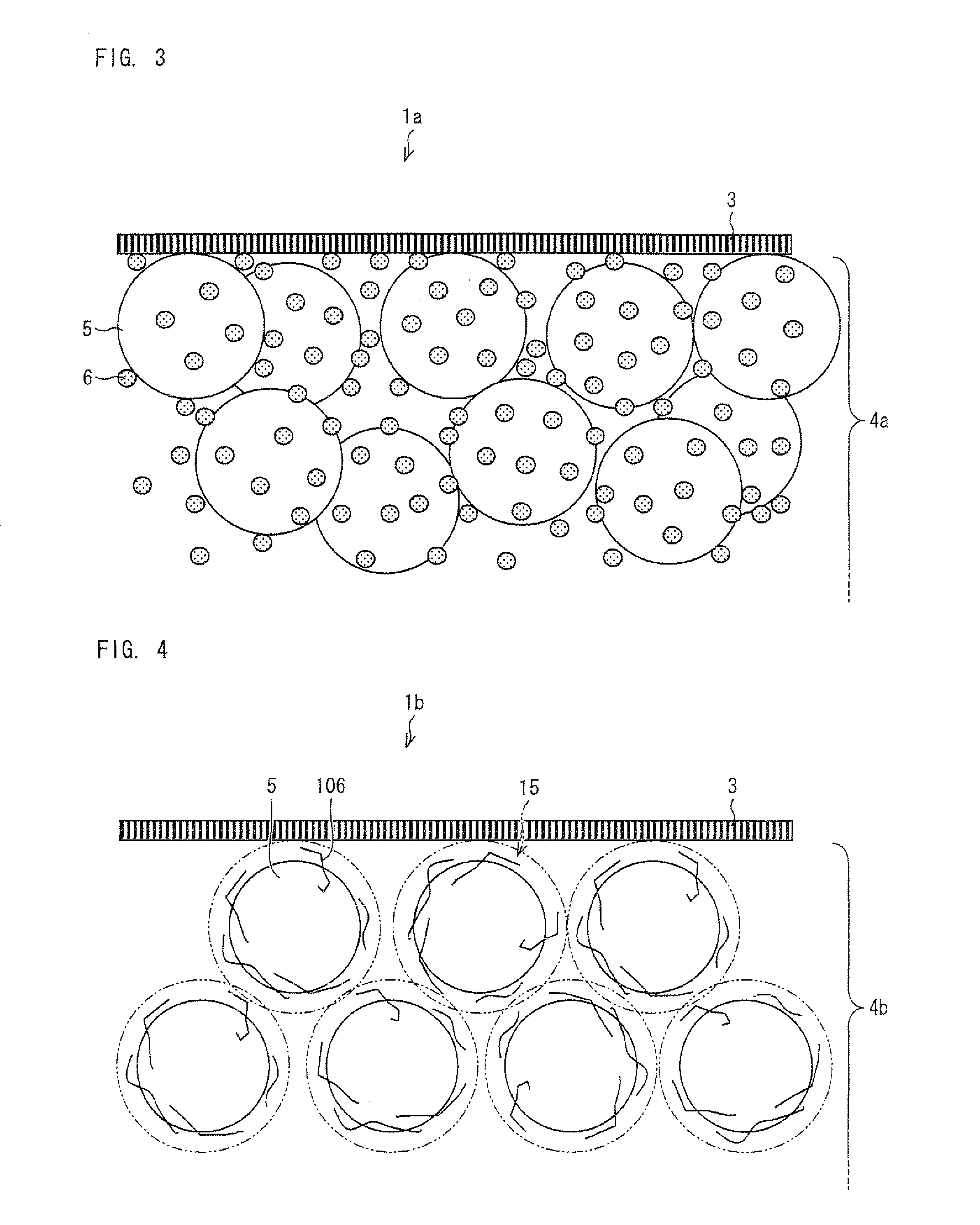Electron emitting element, electron emitting device, light emitting device, image display device, air blowing device, cooling device, charging device, image forming apparatus, and electron-beam curing device
- Summary
- Abstract
- Description
- Claims
- Application Information
AI Technical Summary
Benefits of technology
Problems solved by technology
Method used
Image
Examples
embodiment 1
[0054]FIG. 1 is a schematic view illustrating an arrangement of an electron emitting device 10 including an electron emitting element 1 according to one embodiment of the present invention. As shown in FIG. 1, the electron emitting device 10 includes an electron emitting element 1 according to one embodiment of the present invention, and a power supply 7. The electron emitting element 1 includes: an electrode substrate 2 as a bottom electrode; a thin-film electrode 3 as an upper electrode; and an electron acceleration layer 4 sandwiched therebetween. Further, the electrode substrate 2 and the thin-film electrode 3 are connected to the power supply 7, so that a voltage can be applied between the electrode substrate 2 and the thin-film electrode 3 which are provided so as to face each other.
[0055]The electron emitting element 1 applies a voltage between the electrode substrate 2 and the thin-film electrode 3 so that current flows through the electron acceleration layer 4 provided betw...
example 1
[0132]First, 3.0 g of toluene was supplied as a solvent into a 10 mL reagent bottle. Then, 0.50 g of spherical silica fine particles EP-C413 (manufactured by Cabot Corporation), having an average particle diameter of 50 nm were added to the toluene. Subsequently, the reagent bottle was set in an ultrasonic dispersion device so that the silica fine particles serving as the insulating fine particles 5 were dispersed. Subsequently, 0.12 g of silver nanoparticles (average particle diameter: 10 nm (inclusive of a thickness of 1 nm of an alcoholate insulating coating film), manufactured by Applied Nanoparticle Laboratory Co.) were further added as the conductive fine particles 6. Then, the reagent bottle was set in the ultrasonic dispersion device again so that a dispersion solution was obtained. A ratio of the conductive fine particles 6 with respect to a total mass of the added particles was approximately 20%.
[0133]Next, the dispersion solution thus obtained was dropped on a 30-mm squar...
example 2
[0140]A fine particle dispersion solution in which silica fine particles serving as the insulating fine particles 5 were dispersed was produced as follows. First, 3 mL of toluene was supplied as a solvent into a 10 mL reagent bottle. Then, 0.03 g of AJISPER PB821 (manufactured by Ajinomoto Fine-Techno Co., Inc.) serving as the basic dispersant (basic functional copolymer) 106 was added to the toluene. Subsequently, the reagent bottle was set in an ultrasonic dispersion device so that the AJISPER PB821 was dispersed. After that, 0.25 g of silica particles were added thereto, and the reagent bottle was again set to the ultrasonic dispersion device so that the silica particles were dispersed. The silica particles are fumed silica C413 (manufactured by Cabot Corporation) having a diameter of 50 nm, and surfaces of the silica fine particles are subjected to a hexamethyldisilazane treatment. The reagent bottle was processed in the dispersing device for about 10 minutes, so that the silica...
PUM
 Login to View More
Login to View More Abstract
Description
Claims
Application Information
 Login to View More
Login to View More - R&D
- Intellectual Property
- Life Sciences
- Materials
- Tech Scout
- Unparalleled Data Quality
- Higher Quality Content
- 60% Fewer Hallucinations
Browse by: Latest US Patents, China's latest patents, Technical Efficacy Thesaurus, Application Domain, Technology Topic, Popular Technical Reports.
© 2025 PatSnap. All rights reserved.Legal|Privacy policy|Modern Slavery Act Transparency Statement|Sitemap|About US| Contact US: help@patsnap.com



